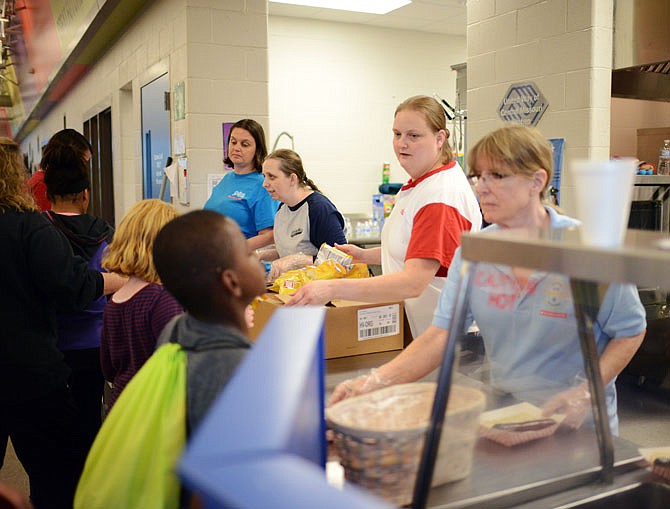Overall, the number of children living in "concentrated poverty" in Missouri has declined slightly, according to a recently released 2019 KIDS COUNT data snapshot.
"Children Living in High-Poverty, Low-Opportunity Neighborhoods" looked at where concentrated poverty has worsened across the United States despite a long period of national economic expansion.
The report used U.S. Census Bureau data to analyze tracts that had at least 30 percent of households at or below the poverty level.
The report uses Census tracts as proxies for neighborhoods, according to Tracy Greever-Rice, Missouri KIDS COUNT program director.
The KIDS COUNT Data Book is an annual ranking of states based on 16 measures of child well-being. The data book has been published annually since 1990.
The program is intended to provide legislators, public officials and child advocates with reliable data, policy recommendations and tools to advance policies that benefit children, according to the Annie E Casey Foundation website.
"Data snapshots like these can provide policymakers at the state, local and national level with high-quality information, to inform their work," Greever-Rice said.
Researchers looked at concentrated areas of poverty in each state, whether they were metropolitan or not, she added.
However, in Missouri, concentrated areas of poverty were most likely in Kansas City and the city of St. Louis.
Living in areas of concentrated poverty (those whose populations are at least 30 percent in poverty) creates serious risk to child development and well-being, according to the report. About 12 percent of all U.S. children (about 8.5 million) live in these conditions, making them less likely than other children to have access to healthy food, quality education, reliable medical care and stable housing.
They are also more likely to remain poor as adults, according to the report.
The report looked at two data sets. The first provided information for the five years from 2008-12. The second looked at the five years from 2013-17.
"Missouri is a state where concentrated poverty has gone down some. It has gone down a little bit," Greever-Rice said.
During the earlier period, 136,000 (about 10 percent) of the state's children lived in concentrated poverty. That number had decreased to 121,000 (about 9 percent) of the state's children in the second period.
Very young children (ages 0-4) were less likely to live in areas of concentrated poverty in the second period. Also, the overall status of children and young adults (ages 5-25) remained consistent. There were also declines in the likelihood that children in the state's two largest metropolitan areas (Kansas City and the city of St. Louis) lived in poverty, from 30 percent to 27 percent.
The rub is in rural areas of the state.
The number of children living in concentrated poverty outside metropolitan areas increased from 26,000 to 29,000 (from about 8 percent to 9 percent).
Also the percentage of white, non-Hispanic children living in the conditions has risen from 4 to 5 percent. The percentage of black children living in concentrated poverty declined, from 33 to 28 percent.
Bill Dent, executive director of the Family and Community Trust - a nonprofit made up of 19 members taken from leadership in state government and the private sector - said Missouri uses community partnerships to improve conditions that result from concentrated poverty.
Missouri is a state that, over the past year, didn't change much in terms of "Child Well Being." It fell from 26th-ranked to 28th.
Well-being is measured by combining data that considers economic well-being, education, health, and family and community. The report only provided rankings among states - not individual data.
Economic data looked at the number of families with incomes below the poverty line, families whose income was insecure, housing costs and poverty rates among minorities. Economically, Missouri ranked better than most (22nd).
Missouri was 25th-ranked in education. To find this ranking, researchers looked at availability of early childhood programs, youth (fourth-graders) proficiency in reading, proficiency in (eighth-grade) math and on-time graduations.
The state stood ranked 29th in family and community. Those data looked at the percentage of children living in single-parent families and families in which the head of the household lacked high school diplomas.
Pulling the state down in terms of child well-being was its rank in terms of health - it was 32nd. Data for that category included the number of low birth-weight babies, children without health insurance, child and teen deaths, and teen drug or alcohol abuse.
The report urges leaders to set policies at community, county and state levels that can affect children's lives.
It calls for:
An end to housing discrimination based on whether a person was formerly incarcerated or is using a federal housing voucher.
Expanding workforce training that is targeted at high-poverty, low-opportunity communities.
Developing and funding small-business loan programs in low-income neighborhoods or communities of color.
Increasing housing options by offering community land trusts and limited-equity cooperatives to provide lower interest rates for low-income home-seekers.
Acquiring vacant and blighted properties to develop them for productive use.

